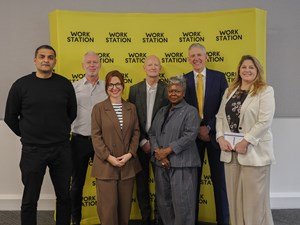100 Years in Space
Fifty years ago, in 1969, humans achieved something once thought impossible; we stepped onto the moon. Watched by millions around the world, we heard the immortal words ‘one small step for man, one giant leap for mankind’ and suddenly a new world of possibilities opened up in front of us.
The glorious film, Apollo 11, made up of long lost archive footage of the most celebrated NASA mission, tracks the days and hours up to that tremendous achievement. Fifty years on, we have already made gigantic steps forward in space travel, but this film got us wondering; where will we be in another fifty? Now, it turns out, as a bunch of filmy people, our collective knowledge was pretty limited. We could come up with some great ideas for films and reference great films, but it wasn’t really fitting the bill.
So, we decided we should ask the experts at the University of Sheffield where they predict the future of space travel will take us. Actual experts on the subject Dr Jonathon Aitken (@DrJonAitken), from the Department of Automatic Control and Systems Engineering, and Dr Russell Goodall (@msesheffield) of the Department of Materials Science and Engineering, broke it down for us, into three key areas.
Cost
One of the most exciting developments in space travel is reduction of cost. “SpaceX’s reusable launch systems that allow payloads to be transported to space easily and quickly lowering cost,” says Dr Aitken. “Reaction Engines Ltd’s Sabre Engine offers the prospect of a single-stage-to-orbit spaceplane, which will again open up space transport, as it consists of one vehicle from Earth to space and back again, removing the need for separate rockets.”
Efficiency
Dr Russell Goodall states that “efficiency in aerospace is a key driver, reducing costs and environmental impact.” By utilising and developing four elements: lighter aircrafts, higher temperature resistance, smarter materials and developments in fusing of materials, space travel will become faster, lower in costs and will hopefully see rockets travel for further distances!
Conditions
Starting to feel a bit more futuristic, Dr Aitken’s predicts that one of the biggest developments in space travel will be autonomy, citing the use of robotics as a primary advancement. “Developing robots capable of operating at greater distances from humans, that can operate without direct human input to carry out their scientific missions will be key.” It’s this ability to operate in difficult and inhabitable environments which make robots the perfect tool for space exploration. “Communications difficulties through latency or atmospheric conditions on planets makes exploration difficult. Additionally, robots have to operate in environments very different from here on Earth. Going forwards we’ll see collaborating teams of robots used for exploration on other planets. For example, the Mars 2020 Rover will deploy a scout UAV, which will be used to aid navigation, giving a close-up picture of the surface. This will enable better path planning with more information about passable routes to prevent valuable scientific time being wasted reversing because it’s path is blocked!”
So there you have it, within the next fifty years we might be seeing space crafts travelling further than ever for a significantly lower cost – unfortunately it also means the robots might be getting priority seating!
You can catch Apollo 11 from Friday 28th June.


